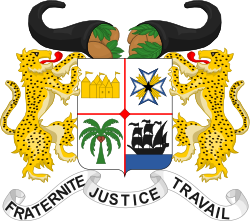 |
|---|
| |
Administrative Council elections were held in Dahomey for the first time in 1925. [1]
 |
|---|
| |
Administrative Council elections were held in Dahomey for the first time in 1925. [1]
The Administrative Council was established in 1894, [2] Although it had no elected members, the Chamber of Commerce selected some of the councillors. [3] However, three elected seats were introduced in 1925.
Three constituencies were created for the elections, Abomey, Ouidah and Porto-Novo. The franchise was extremely restricted, with only 470 people registered to vote. [4]
Two of the three seats were won by candidates supported by the French colonial authorities. However, Pierre Johnson was elected in Ouidah despite opposition from the French. [1]